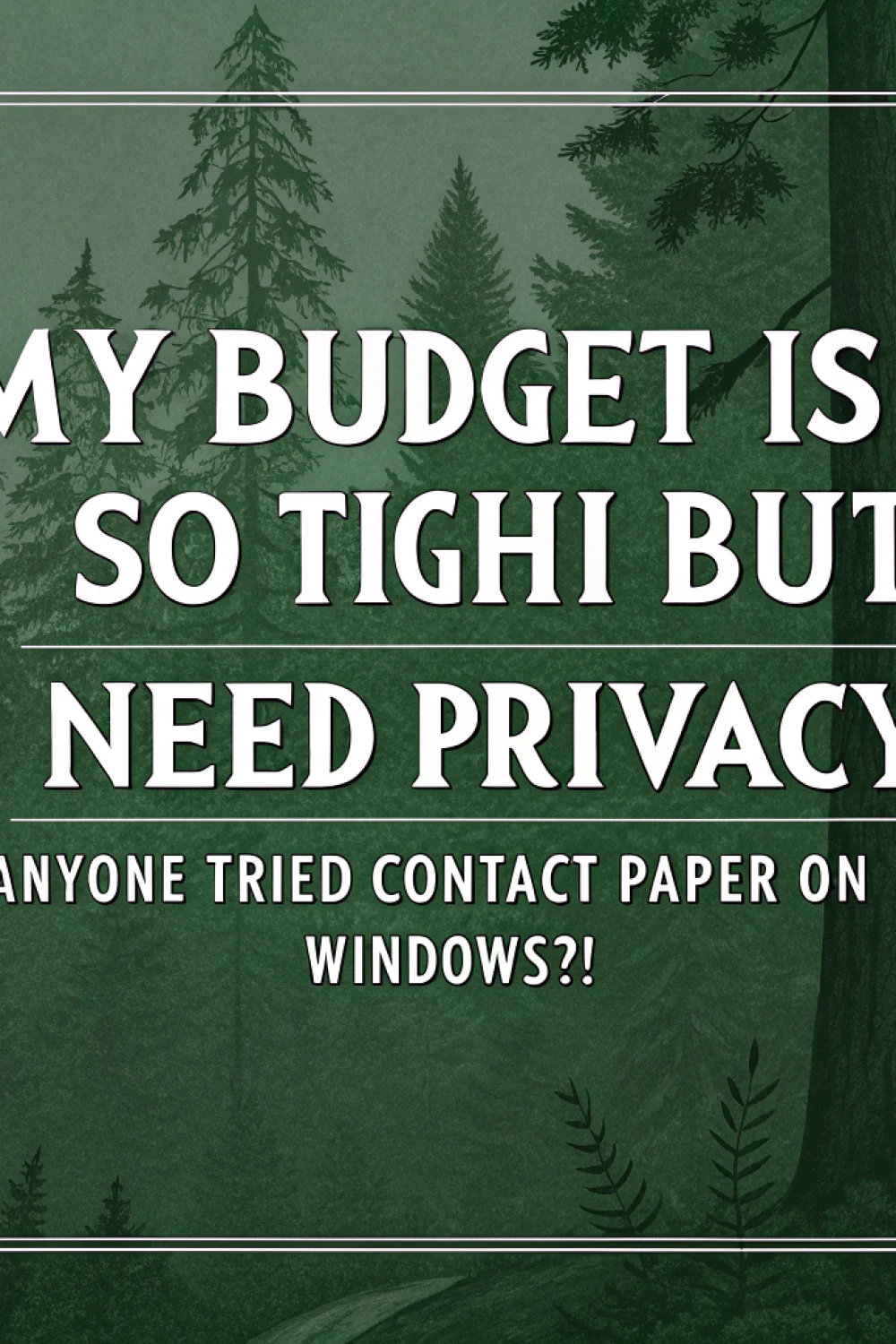Want to save this recipe?
Enter your email below and we’ll send the recipe straight to your inbox!
Introduction
Privacy at home is essential, but quality window coverings can be surprisingly expensive. When you’re on a tight budget, spending $50-$200 per window for new curtains simply isn’t feasible. Yet leaving windows uncovered isn’t an option either—especially for bedrooms, bathrooms, or street-facing rooms. Whether you’ve just moved into a new place, are waiting for backordered curtains, or simply need to stretch your home improvement budget, this temporary privacy solution will save the day without emptying your wallet.
The Solution: Contact Paper Window Privacy Film
The answer to your privacy needs might be simpler than you think: removable contact paper or window film. This DIY approach creates an effective privacy screen that diffuses light while blocking the view from outside, all for under $10 per window. Here’s how to do it:
What You’ll Need:
- Frosted contact paper or window film ($5-$8 for a roll that covers 1-2 windows)
- Spray bottle filled with water
- A few drops of dish soap
- Scissors
- Credit card or plastic smoothing tool
- Paper towels
- Measuring tape
- Pencil
Step-by-Step Instructions:
- Measure Your Window Glass
First, measure only the glass portion of your window—not the frame. Add an extra half-inch to both measurements to ensure full coverage. For example, if your window glass measures 24″ × 36″, cut your contact paper to 24.5″ × 36.5″. - Clean The Window Thoroughly
Spray the window with a mixture of water and a small amount of dish soap, then wipe it down completely. Any dust, dirt, or residue will create bubbles under your film, so be thorough. Let the window dry completely. - Prepare Your Application Solution
In your spray bottle, combine water with 2-3 drops of dish soap. This solution prevents the contact paper from sticking immediately, giving you time to position it correctly. Shake gently to mix—you don’t want excessive bubbles. - Cut The Contact Paper
Using your measurements, cut the contact paper to size. Make the cuts on a clean, flat surface to ensure straight edges. Pro tip: cut one corner at a 45-degree angle so you’ll know which corner is which when applying. - Spray The Window
Generously spray your soap-water mixture onto the entire window surface. The glass should be visibly wet—this is what allows the film to slide into position. - Prepare The Contact Paper
Peel back about 2 inches of the backing from one corner of your contact paper. Be careful not to let the exposed adhesive stick to itself. - Apply The Film To The Window
With the backing still partially attached, line up the contact paper with the top corner of your window. Press the exposed adhesive portion to the glass, then slowly peel away more backing while smoothing the film onto the glass. Work from top to bottom, removing the backing as you go. - Adjust As Needed
If the paper isn’t perfectly aligned, you can gently lift and reposition it. The soapy water solution gives you about 5 minutes of adjustment time before the adhesive starts to set. - Remove Air Bubbles
Working from the center outward, use your credit card or smoothing tool to push out any air bubbles. Apply firm, even pressure in sweeping motions toward the edges. The soapy water will squeeze out as you go. - Trim Any Excess
Once the film is completely applied and smoothed, trim any excess along the edges with scissors for a clean finish. - Let It Dry
Allow the film to dry completely for at least 24 hours before touching it. As it dries, it will adhere more firmly to the glass and become clearer.
Tips and Considerations
- Pattern Options: While frosted film provides the most privacy, you can also find contact paper in decorative patterns like stained glass or geometric designs for added style.
- Removing The Film: When you’re ready to remove it, simply lift one corner and slowly peel it away. Any residual adhesive can be removed with a mixture of equal parts vinegar and water.
- Bathroom Application: For bathroom windows where humidity is high, give special attention to sealing the edges well. The moisture can sometimes loosen the adhesive over time.
- Seasonal Considerations: In extreme temperature areas, be aware that very hot or cold windows may affect adhesion. Apply on a moderate temperature day when possible.
- Rental-Friendly: This solution is perfect for renters since it leaves no damage when removed properly.
- Light vs. Privacy Balance: The frosted film allows plenty of natural light while providing privacy. However, at night with interior lights on, silhouettes may still be visible. For complete nighttime privacy, consider using this in conjunction with simple tension rods and flat sheets until you can afford proper curtains.
- Budget Stretching: One roll of contact paper typically covers 1-2 average-sized windows, making this an extremely cost-effective solution at approximately $4-$8 per window.
Conclusion
Privacy doesn’t have to come with a hefty price tag. This simple DIY window film solution provides immediate privacy while letting natural light flow through—all for less than $10 per window. It’s a perfect temporary fix that looks surprisingly professional and can last for months until you’re ready to invest in permanent window treatments. Your wallet (and your privacy) will thank you!

